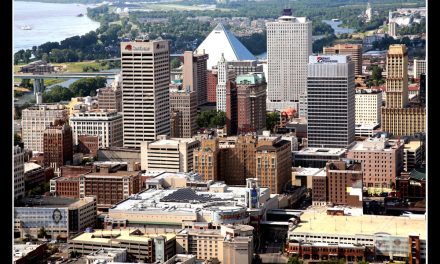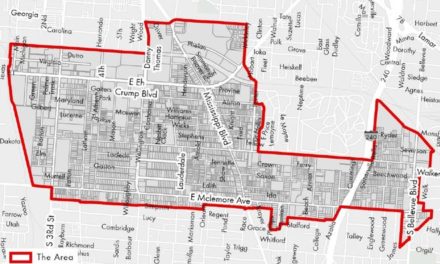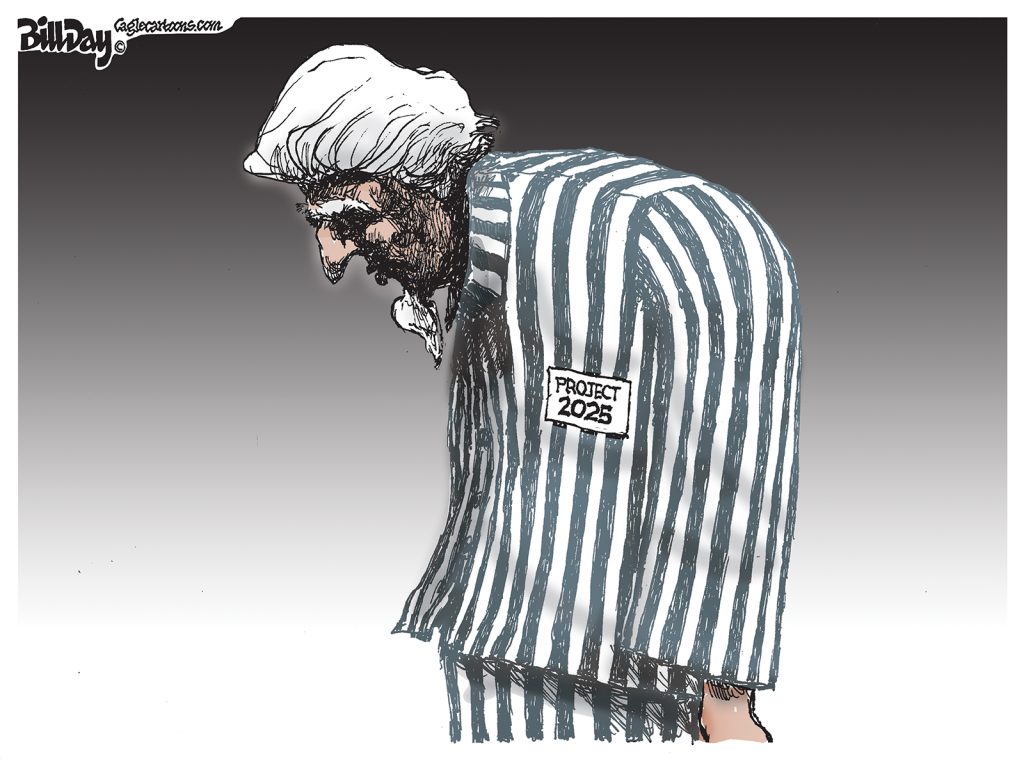Legendary Bellevue Baptist Church preacher R.G. Lee had a legendary sermon called “Pay Day Someday.” It was an emotional sermon made even more dramatic by his penchant for wearing white suits in the pulpit.
“Payday Someday” is a potential theme for Memphis Mayor A C Wharton’s Budget Message tomorrow, but rather than a white suit, he needs someone to ride in on a white horse with saddlebags with $68 million to pay the debt to Memphis City Schools that predates his administration.
As we wrote in Part One, there is nothing more complex and complicated in government than the yearly bloodletting that is budget deliberations. The fact that underlines the degree of difficulty is this: every dollar of property tax revenues collected by city government is still $50 million short of paying just for police and fire services.
Despite the obsession with the property tax rate, it only funds about 27% of the city’s total budget, and despite conventional wisdom to the contrary, City of Memphis has a better “cost of government” record than Shelby County Government and the large suburban towns. If Memphis spent the same amount as Germantown, for example, the Memphis budget would be more than $2 billion or twice what it is now.
High Hurdles
The biggest obstacles to smarter city budgets are both structural and cultural.
The structural issues include the entrenched poverty that snares 150,000 Memphians, the 35% of Memphians not in the labor force, the hollowing out of the middle class, lower densities in almost 50 census tracts that drive up costs (about 10 census tracts have lost more than 30% of its population in 10 years), sprawl, a region with low incomes and education, regional transportation plans that weaken its urban heart, and a regressive Tennessee tax system.
These problems put high hurdles in the way of city budgeting, and exacerbated by the national recession, city budgets have taken a hit because of their reliance in property values and consumer spending. In the past three years, property tax collections have fallen $20 million and this year’s property tax projection for City of Memphis feels mostly an exercise in wishful thinking.
To develop more reliability in forecasting, a more dependable budgeting context, and to bring more reasonable financial options from year to year, Mayor Wharton announced in his State of the City speech that he would begin the development of a five-year strategic fiscal plan to map out options for dealing with the perennial issues found in the expenditures and revenues sections of the budget by bringing forth more innovative and imaginative financial strategies.
Structural Problems
Meanwhile, in addition to the structural problems, There are cultural problems in City of Memphis that constrain budget discussions because of a lack of information about returns on investments, reliable unit costs for each city service, lack of dependable information about citizen needs, and the absence of meaningful performance measurements. These are all items on Mayor Wharton’s agenda, but the fact that he inherited a city government with a $1 billion budget that lacks information considered routine in most major cities has been a real drag on better management and accountability.
It’s not the sort of things that get the headlines, but shaking up city government and creating a culture of innovation and entrepreneurial government promises big dividends, especially to a government where the culture seems unchanging and impenetrable. It’s why city departments have to come to see their roles in different ways.
Financial management cannot be treated as a mathematical exercise but a lever for culture change through valuable budgetary analysis and comparisons, revenue forecasting, and better economic trend tracking.
In many major cities, the IT division is the center for innovation and change through the application of new technological solutions. The explosion of social networking and smart devices has ushered in an exciting new era of city engagement and transparency in government unlike anything ever seen before. While other cities are inventing 21st century technological answers to engage the public, Memphis technology is stuck in the 20th century.
Technology to Drive Innovation
Here, IT officials tend to see their division as the operator of equipment and systems, and rather than driving change by producing the kind of information that is vital to sound budgeting and management, technological answers seem several generations behind even cities much smaller than Memphis.
The general lack of technological innovation and momentum is reflected in City of Memphis’ website, which despite rhetoric about creating a distinctively Memphis one, is nothing short of abysmal, lacking any effective way for the public to engage with city government (unless it’s a way for us to pay the city money).
Across the U.S., cities’ IT operations are innovating new technologies, new programs, new ways of connecting people their governments, more measurements about city performance, and transparency in city operations, but here, it is not to be, despite convincing research and white papers pointing out how technology has been the key to the transformation of government cultures.
More to the point of this week’s budget speech, the inability to use technology optimally results in the city’s lack of understanding about the complexity of city budgeting, the difficult choices to be made, and the kind of city Memphians want their city to be.
The Right Focus
In the end, that’s what the city budget process is all about.
While media reports will treat it as a debate about a list of line items, personality conflicts about an accounting document, or a disputed inventory of city services and their costs, the budget is in fact a social compact between Memphis citizens and their government.
In that vein, the budget is the promise and path by city government to move Memphis toward the future that its citizens deserve. It’s a journey that begins tomorrow and continues for weeks. With any lucky, the real discussion will focus on policies and choices about the future, rather than merely arguments about dollars and cents.
.






Why does Memphis have such high poverty levels?
Memphis has a long, long history of being the place where workers in the three state area went in search of jobs…when the farms shut down, when they weren’t needed on the plantations, and when factories closed. It’s always been a magnet for people looking to the city as the place of hope; however, with few skills, many of these workers began the generation after generation of poverty that is now entrenched. Another reason that the poverty rate stays high now is arithmetical: because of the out-migration of the middle class and the inability of the poor to move. If more people were moving into Memphis, the percentage would fall but that’s not happening.
Interestingly, Memphis isn’t in the top 10 cities with the highest poverty rate, but it is in the top 3 as the MSA with the highest poverty rate because of the other counties’ poverty rates that are higher than normal for suburban counties.
[Why does Memphis have such high poverty levels?]
The real answer is the Culture of Poverty as explained by Walter Williams and Patrick Moynihan in the 1960’s. Memphis is ravaged by illegitimacy and its many well-documented social pathologies: high levels of anti-social behavior, anti-education bias among the young, crime, failed schools, absence of job skills, absence of work ethic, etc, etc.
Thanks for answering my question Smart City.
What will it take for Memphis to become a bustling city? Or will it forever be a slow growth ctiy?
There is a modest influx of bright, young people that come to the City every year, but due to the intolerable schools they move out as soon as they are ready to start a family. All my college friends have long since moved out. IMO, the only way to slow this crippling brain drain would be to convert public education to a voucher system to enable those young families to send their kids to good schools of their choice in the City. Otherwise, Memphis will remain slow-growth or no-growth.
You might want to look at how voucher systems have NOT worked elsewhere.
In addition to what SCM says above consider three major factors: Union control of Memphis throughout the Civil War led freemen to relocate here, 2) yellow fever epedimic led to wealthier residents leaving, and 3) long history of racial discrimination.
“Discrimination” was a universal element in the United States to varying degrees. It was hardly more severe in Memphis than in many other locations making it hardly unique and thus is difficult to include it as a significant factor. In fact, in some instances, discrimination based on ethnicity was less severe in Memphis than in many of its contemporary peer cities.
I cannot find many references that show that Memphis experienced a significantly larger influx of freed slaves than any other post civil war city.
I personally contribute the high level of poverty in the Memphis MSA
1) As SCM stated: a metropolitan area that includes exceptionally poor surrounding counties that never developed beyond their agricultural base. Even in that, the agricultural base was focused almost entirely on highly volatile, lower yield per acre crops. Memphis is and always has been a relative island of prosperity in an ocean of squalor.
2) The apparent lack of drive towards industrialization that would process local agricultural products in order to produce higher value market items in the mid 19th century. An early proposal to construct a canal in order to provide the cheap hydo-power needed to build textile mills and other manufacturing concerns in Memphis was defeated in a public referendum. In a city and region that lacked local access to almost all other means to drive rapid urban growth, this missed opportunity to transform a city surrounded by cotton and provided with ample means of transportation is perhaps the city and region’s greatest missed opportunity and thus perhaps the greatest supporter of the region’s impoverished legacy.
THAT”S what’s missing! A row of vacant textile mills along the waterfront!!
“After the capture of Memphis by Union forces in 1862, the city became a concentration point for contraband camps as well as haven for freed slaves seeking protection from their former owners. The black population of Memphis increased from 3,000 in 1860 to nearly 20,000 in 1865.
Following the end of the American Civil War, tension was heightened when black Union Army soldiers were used to patrol the city. Through early 1866, there were numerous instances of threats and fighting between black soldiers and white Memphis policemen, who were mostly (90%) Irish immigrants. Officials of the Freedmen’s Bureau reported that police arrested black soldiers for the minor offenses and treated them with brutality. Although black soldiers were commended for restraint, rumors spread among the white community that blacks were planning some type of organized revenge. Trouble was anticipated when most black Union troops were mustered out of the army on April 30, 1866. The former black soldiers remained in the city while awaiting discharge pay.” (Ryan, James G. 1977. The Memphis Riots of 1866: Terror in a black community during reconstruction. The Journal of Negro History 62 (3): 243-257.)
While I agree with your statement, “Discrimination” was a universal element in the United States to varying degrees.” I disagree that it was not different. Memphis Race Riot, (May 1866), in the U.S. post-Civil War period, attack by members of the white majority on black residents of Memphis, Tennessee, illustrating Southern intransigence in the face of defeat and indicating unwillingness to share civil or social rights with the newly freed blacks. In the attack, which occurred a little more than a year after the Confederate surrender, 46 blacks (most of them Union veterans) were murdered, more than 70 wounded, 5 black women raped, and 12 churches and 4 schools burned. Such unprovoked violence aroused sympathy in the U.S. Congress for the freedmen, drawing attention to the need for legal safeguards in their behalf and thus helping to win passage (June 13, 1866) of the Fourteenth Amendment to the U.S. Constitution (“Memphis Race Riot.” Encyclopædia Britannica. Encyclopædia Britannica Online. Encyclopædia Britannica Inc., 2012. Web. 18 Apr. 2012).
Interestingly, the report on the riot conducted by Col. Charles F. Johnson, Inspector General States of Ky. And Tennessee and Major T. W. Gilbreth,
came to the conclusion that “The remote cause of the riot as it appears to us is a bitterness of feeling which has always existed between the low whites & blacks, both of whom have long advanced rival claims for superiority, both being as degraded as human beings can possibly be. This tension continues.
While I agree with your comments regarding industrialization they do not negate the realities of the history of racial tension and, yes, discrimination which have plagued the city. Perhaps reading some relevant books on the topic would help your understanding. Marcus Pohlmann of Rhodes College offers the followiing: “Where Have You Gone Horatio Alger?: A Convergence of Race and Poverty in the Memphis City Schools” (University of Tennessee Press, 2008); “Black Politics in Conservative America; African American Political Thought,” 6 volumes; “Landmark Congressional Laws on Civil Rights;” “Racial Politics at the Crossroads;” “Governing the Postindustrial City;” and “Political Power in the Postindustrial City.”
Adding to the problem is that historical “white flight” has become a much broader “middle class flight” which includes all races. Of course there are many other factors when discussing something as complex as poverty. Many a book has been written on the topic and there are academic research centers the world over attempting to understand the phenomenon.
Great conversation. Thanks so much for taking this post in such an informative direction.
In answer to question about slow growth or bustling growth, we never say never when it comes to cities, but there’s nothing to indicate now that the growth patterns are going to be disrupted in a more dynamic way. That said, it does seem that there are many initiatives and programs that are converging here now that say to us that this could well be our moment to change the trajectory, but we have to elevate our game to make it happen.
No doubt the Riot of 1866 galvanized national political forces during the years of Reconstruction. My main point was that taken as a whole, I cannot find reference to the fact that the freedmen influx into Memphis following the recapture of the city by Union forces was any more significant here than experienced in other southern towns and cities.
Per riots, Memphis was hardly alone in this category. Among many, many examples:
The New York riot of 1863 which while initially ignited as a result of the draft policies enacted by the Union during the Civil War, quickly became a race riot in which at least 11 African Americans were lynched and undependable number of others murdered.
New Orleans was the setting of a race riot two months after that which occurred in Memphis which resulted in 38 deaths and 46 wounded and saw that city placed under martial law for a full month. In 1874, New Orleans was again the scene of a riot (this time more organized) via the Battle of Liberty Place which left 38 dead and 79 wounded.
The Chinese Massacre of 1871 in Los Angeles obviously was not directed towards African Americans, it did result in the death toll estimated to be between 18 and 84 Chinese immigrants.
While Seattle’s race riot of 1886 was not directed towards freedmen or African Americans, it did involve a mob violently rounding up the vast majority of that city’s Chinese population and their forced expulsion via ships to San Francisco.
Atlanta experienced a severe riot in 1906 in which as many as 40 African Americans were killed.
Chicago saw 38 killed- 23 African Americans- in the race riot of 1919.
1921 saw perhaps the worst race riot to have occurred in the United States when a riot in Tulsa left a death toll estimated as high as 300 African Americans.
One common characteristic of these and almost every other racially motivated riot is they were primarily the result of economic and social competition.
The point is not to excuse the riot in Memphis in anyway. It is simply to observe that so many of the factors noted were hardly unique to Memphis in either their existence or their severity. A massive influx of freedmen, race riots and white/ middle class flight have occurred throughout both the south and the nation at large, making it harder to determine the exact factors that have resulted in the Memphis Metro being home to a significantly higher level of poverty.
I completely agree with your final comment regarding poverty: it is a witch’s brew of complex circumstances and contributing factors. If it were as simple an issue as we would like to portray it, it would be equally simple to resolve.
It’s worth remembering that from its earliest days, Memphis had a very large percentage of African-Americans, and they often outnumbered the Caucasians. Civil War aside, and it was a factor of course, when the wave of yellow fever epidemics hit Memphis time after time, most people with means left. That largely meant that African-Americans and the Irish stayed. Prior to these epidemics, for example, Memphis had a German bank, German symphony, German societies, etc. After the epidemics, there were none.
Memphis was built on African-Americans, African-American culture mixed with river culture, and the circumstances of history resulted in African-Americans being the largely stable and sizable population in Memphis. Then with the advent of the Industrial Revolution, more and more African-Americans moved to Memphis (many kept moving to Chicago).
I consider myself something of an optimist, but having skimmed the budget proposal including its alternatives ranging from a sizeable tax increase to continued reduction in services I find myself somewhat pessimistic if not outright concerned for our city’s future. A significant decrease in property tax revenues is as alarming as any other line item mentioned. Have we finally entered into the decent that has been much discussed on this site and among a certain fringe of the city’s citizens?
I’m not sure what is more vexing- the city’s obviously negative financial trajectory or Joe Brown’s apparent ignorance where city demographics are concerned as highlighted in this passage via the Memphis Daily News:
“Strickland said an increase in what is already the highest property tax rate in the state of Tennessee could prompt more Memphians to leave the city. But council member Joe Brown denied there was such an exodus. ‘Nobody’s going to leave Memphis,’ he said. ‘That’s just a myth for those who want to keep Memphis stagnated.’ Brown said he would oppose any layoffs or pay reductions. ‘People pay taxes for services. We must deliver them,’ he said. ‘Not one member of this body has the right to threaten another person’s livelihood. … A few nickels and dimes is not going to hurt.’”
Yikes.
Could someone please help Councilman Brown get his head out of the ground (or worse)?
After Councilman Brown speaks, we never know whether to laugh or cry. We thought about getting him the population numbers, but he’d probably say the numbers are a myth too.
Strangely, it’s his district where many of the neighborhoods have been decimated. Not that he would care, but 54 Memphis census tracts have lost more than 10% of their population in 10 years, 23 have lost more than 20%, and 5 have lost more than 30%.
What amazed us is that of the total city payroll of almost 7,000, only 1,300 employees are delivering all of the services besides fire and police, which get a pass on ways to increase their efficiency and even reduce their payroll. It seems that Councilman Brown has forgotten that his allegiance is to taxpayers, not to employees, and only in government are people supposed to have a lifetime guarantee for employment.
I’ve enjoyed the history lesson, really, but I don’t believe that events of the 1800’s are the primary driver of Memphis poverty today. The same problems exist in Detroit, Philadelphia, Milwaukee, Cleveland, and others, none of which have the Civil War scars and history of racial animus of Memphis. IMO, the real diversion between poor whites and poor blacks accelerated during and after the 1960’s with the collapse of family.
http://www.heritage.org/research/reports/2010/09/marriage-america-s-greatest-weapon-against-child-poverty